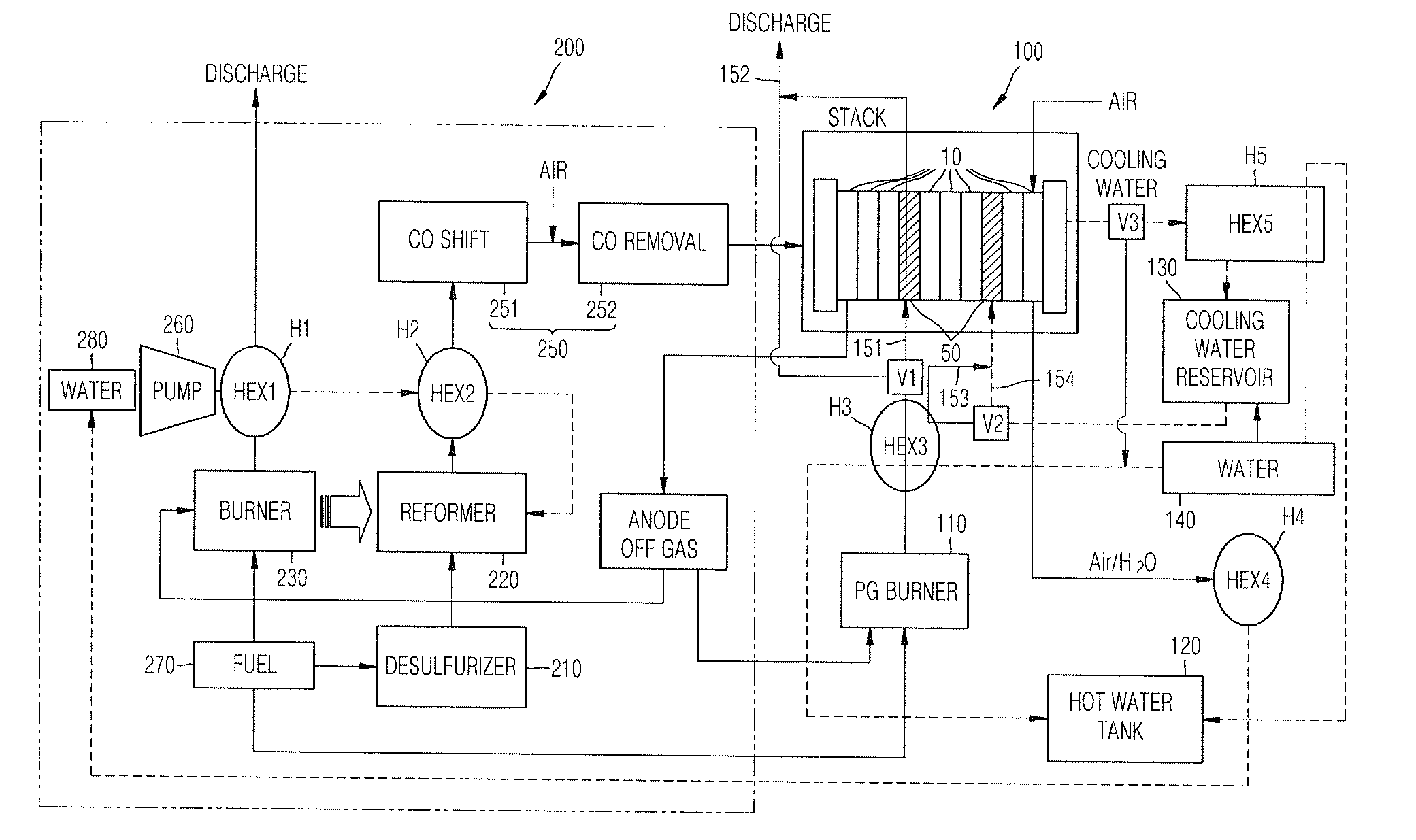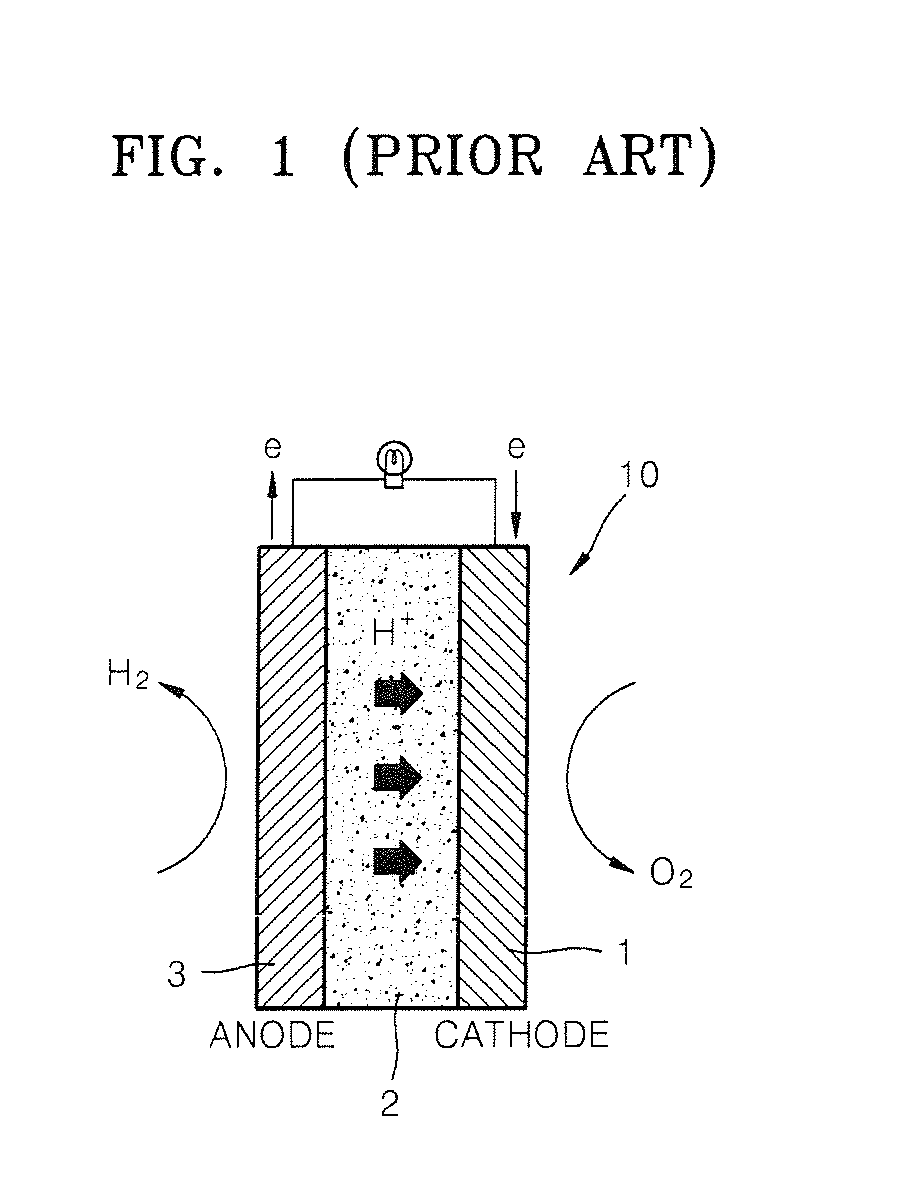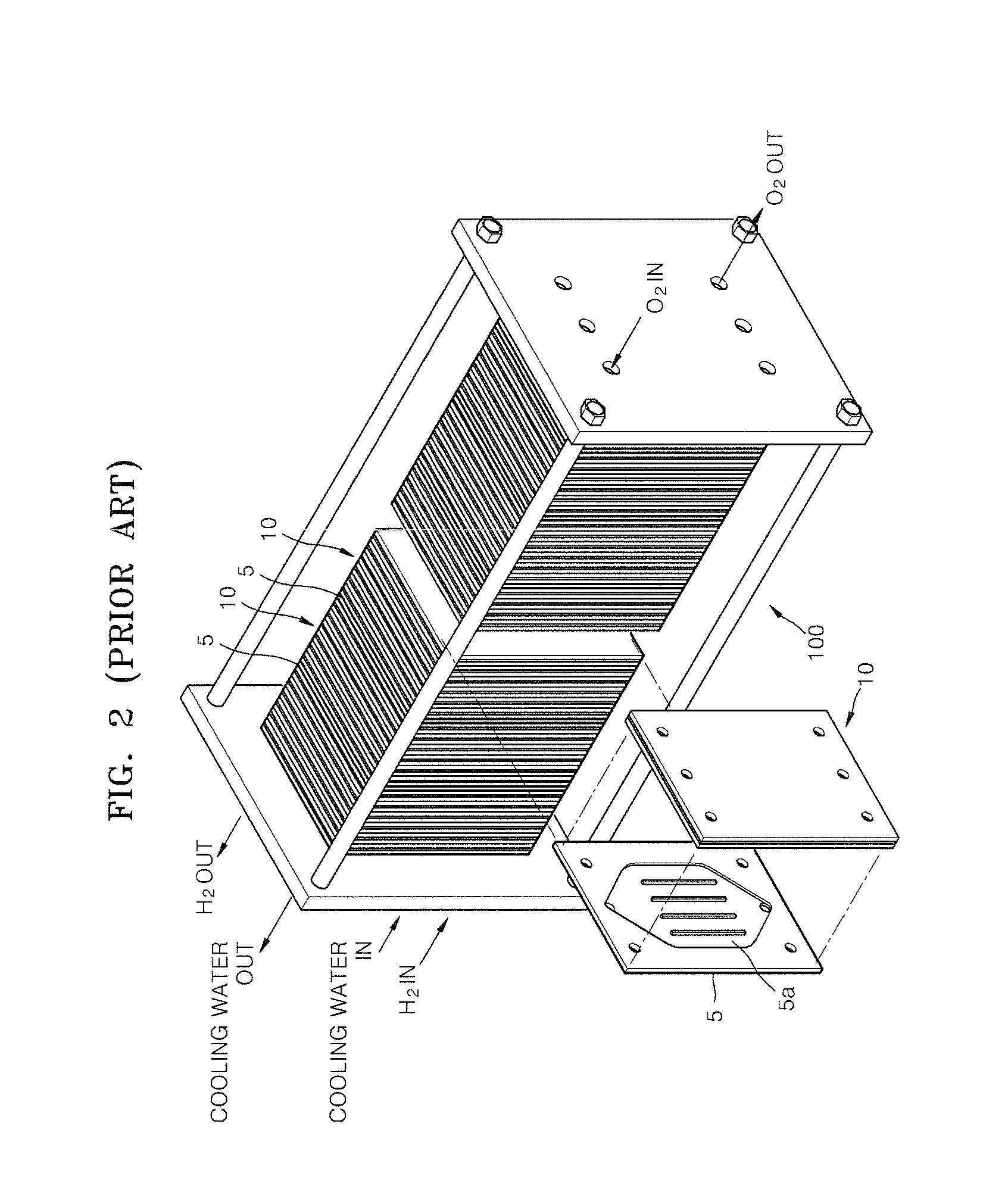Fuel cell system and managing method thereof
a fuel cell and system technology, applied in the field of fuel cell systems, can solve the problems of not having a high voltage for practical use of electric power generated by a unit fuel cell, the temperature of secondary cooling water is generally not sufficient for secondary cooling water, and it takes a long time to get back up to the normal operating temperature inside the stack b>100/b>
- Summary
- Abstract
- Description
- Claims
- Application Information
AI Technical Summary
Benefits of technology
Problems solved by technology
Method used
Image
Examples
Embodiment Construction
[0032]Reference will now be made in detail to the present embodiments of the present invention, examples of which are illustrated in the accompanying drawings, wherein like reference numerals refer to the like elements throughout. The embodiments are described below in order to explain the present invention by referring to the figures.
[0033]FIG. 5 is a block diagram of a fuel cell system according to an embodiment of the present invention. In the fuel cell system, hydrogen is generated in a fuel processing unit 200 and is supplied to a stack 100, and in the stack 100, the hydrogen, which is supplied from the fuel processing unit 200, is used to generate electricity in the same manner as the conventional art.
[0034]Since the fuel processing unit 200, according the present embodiment, includes elements and connection structures that are similar to those of the fuel processing unit 200 illustrated in FIG. 4, a description thereof will be omitted.
[0035]In addition, the unit cells 10 incl...
PUM
 Login to View More
Login to View More Abstract
Description
Claims
Application Information
 Login to View More
Login to View More - R&D
- Intellectual Property
- Life Sciences
- Materials
- Tech Scout
- Unparalleled Data Quality
- Higher Quality Content
- 60% Fewer Hallucinations
Browse by: Latest US Patents, China's latest patents, Technical Efficacy Thesaurus, Application Domain, Technology Topic, Popular Technical Reports.
© 2025 PatSnap. All rights reserved.Legal|Privacy policy|Modern Slavery Act Transparency Statement|Sitemap|About US| Contact US: help@patsnap.com



